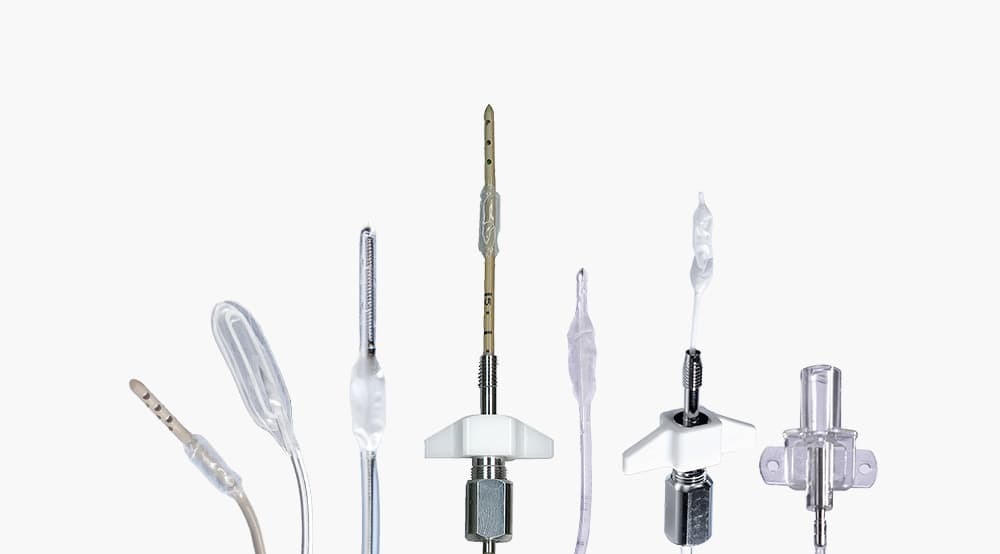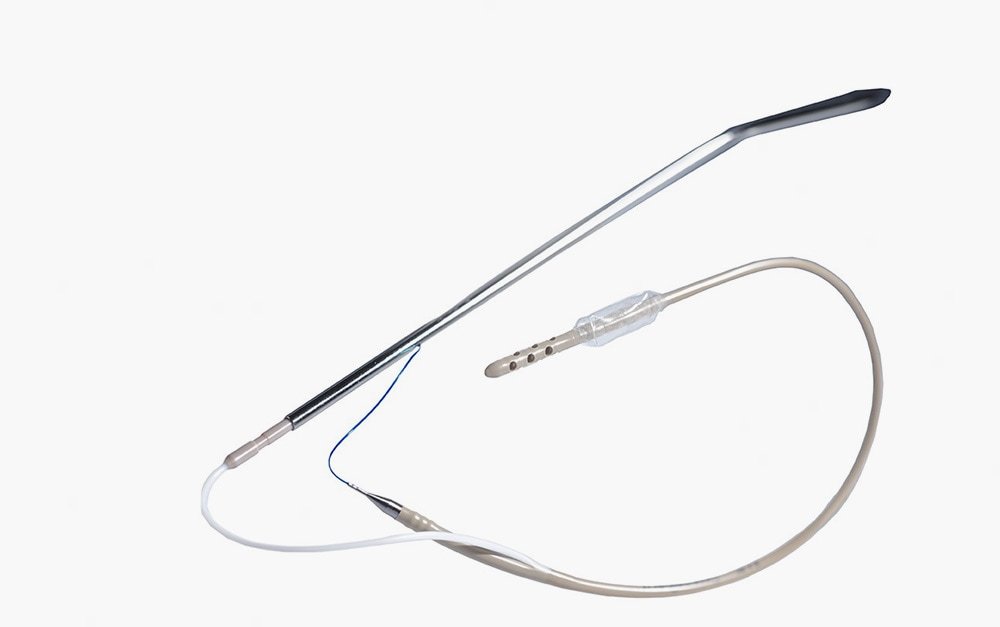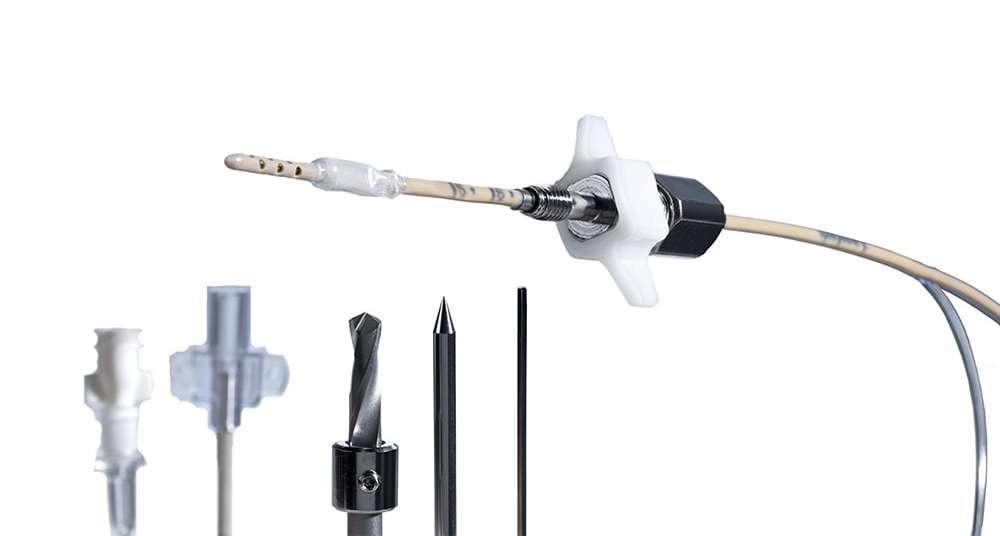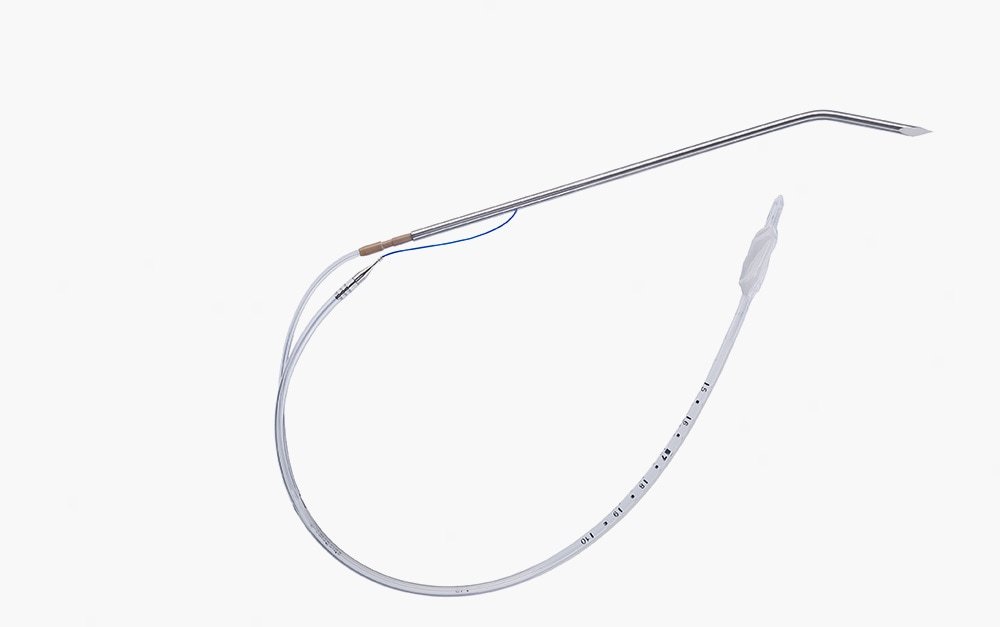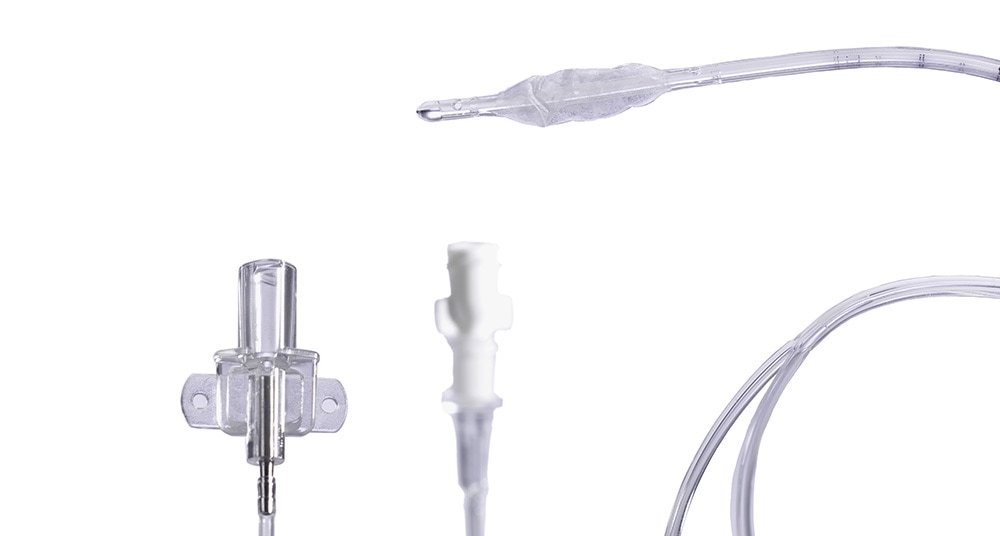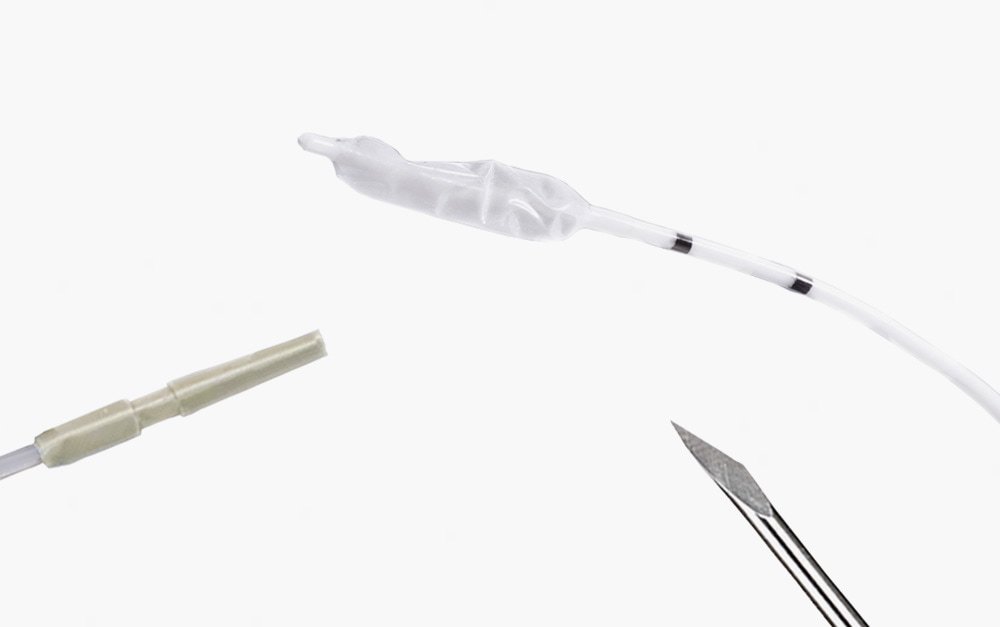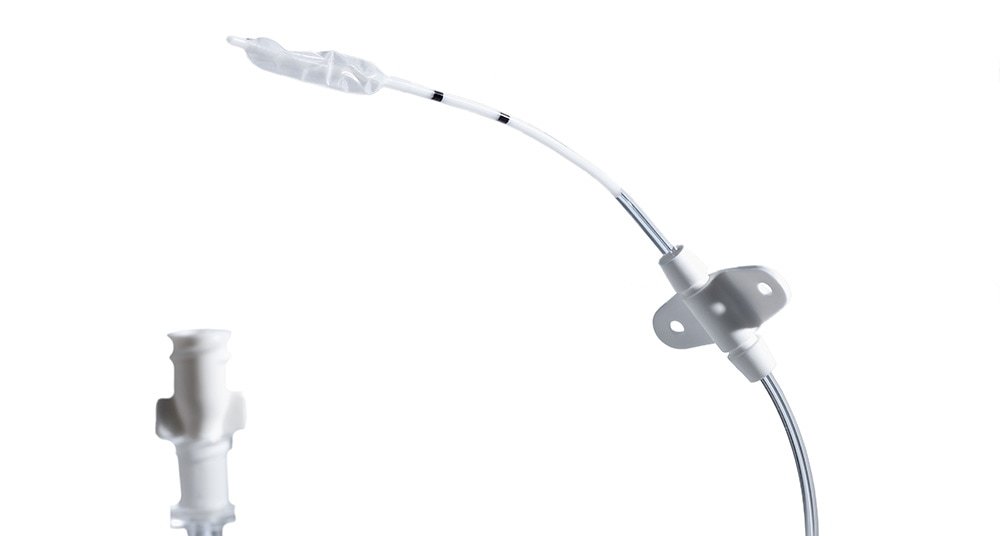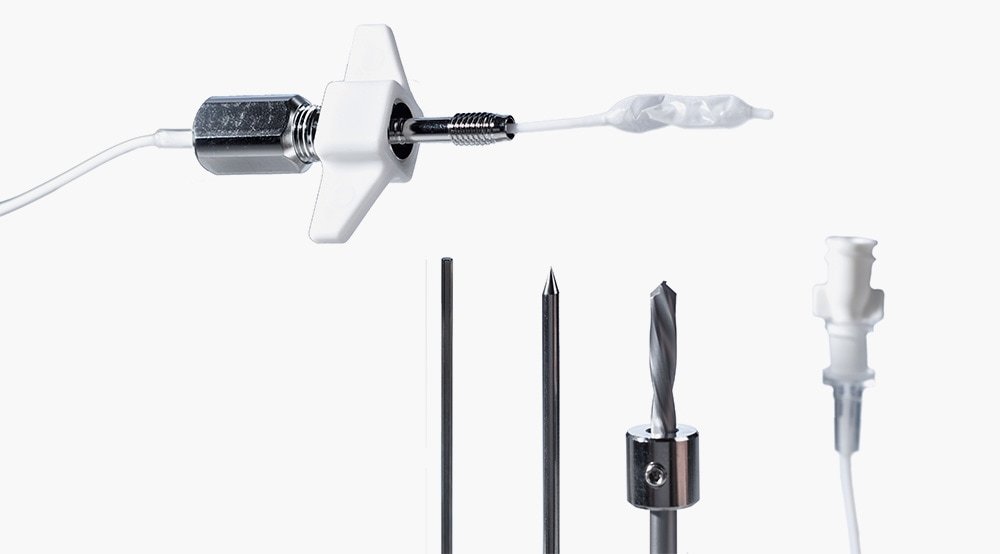ICP Probes
ICP probes for measuring intracranial pressure
All Spiegelberg ventricular ICP probes combine two functions in one product: ICP measurement and drainage. Because the technology is in the monitor and not in the probe, the ICP probes are particularly non-sensitive and are noted for their durability. All ICP probes can also be used directly because they do not require zeroing. Spiegelberg ICP probes are available as tunnel or bolt versions and are MR-compatible at 1.5 and 3 Tesla.
Patented Silverline® technology
Tunnelling Silverline® ventricular probe
The Spiegelberg tunnelling Silverline®ventricular probe is surgically tunnelled from the burr hole with the included trocar with thread tip. To facilitate the tunnelling, the air pouch of the probe is equipped with a slender connector that is connected to the trocar with the thread tip.
Silverline® ventricular probe with cranial bolt
The Spiegelberg Silverline® ventricular probe with cranial bolt is fixed in the cranial bone with a cranial bolt. After making a burr hole and opening the dura, the probe is placed in the ventricle with the bolt in place. Then the bolt is pushed down to the burr hole and screwed into the cranial bone. Now the Silverline® ventricular probe can be fixed with the clamping nut. The drainage tube is connected with the included Luer Lock connector and then to a drainage set with a Luer Lock connector. The air tube is connected to the Spiegelberg ICP monitor.
True tunnelling Intraventricular Probe
The Spiegelberg True tunnelling Intraventricular Probe is an intracranial pressure-measuring probe that is surgically tunnelled from the burr hole with the trocar with thread tip. The air tube of the probe is fitted with a connector to enable tunnelling. It is attached to the trocar with thread tip along with the drainage tube. After tunnelling the trocar is removed. The air tube is then connected to the Spiegelberg ICP monitor with the extension. The drainage tube must be connected with the Luer Lock connector and thus to a drainage kit.
Tunnelling parenchymal probe
The Spiegelberg tunnelling parenchymal probe is a probe with trocar used for measuring the intraparenchymal pressure. The probe is inserted into the parenchyma through a burr hole and is surgically tunnelled from the burr hole with the trocar. To facilitate the tunnelling, the air tube is fitted with a connector that attached to the trocar. After tunnelling, the trocar is removed and the air tube is connected to the Spiegelberg ICP monitor with the extension. The tunnelling parenchymal probe is fixed to the skin with a suturing flap.
